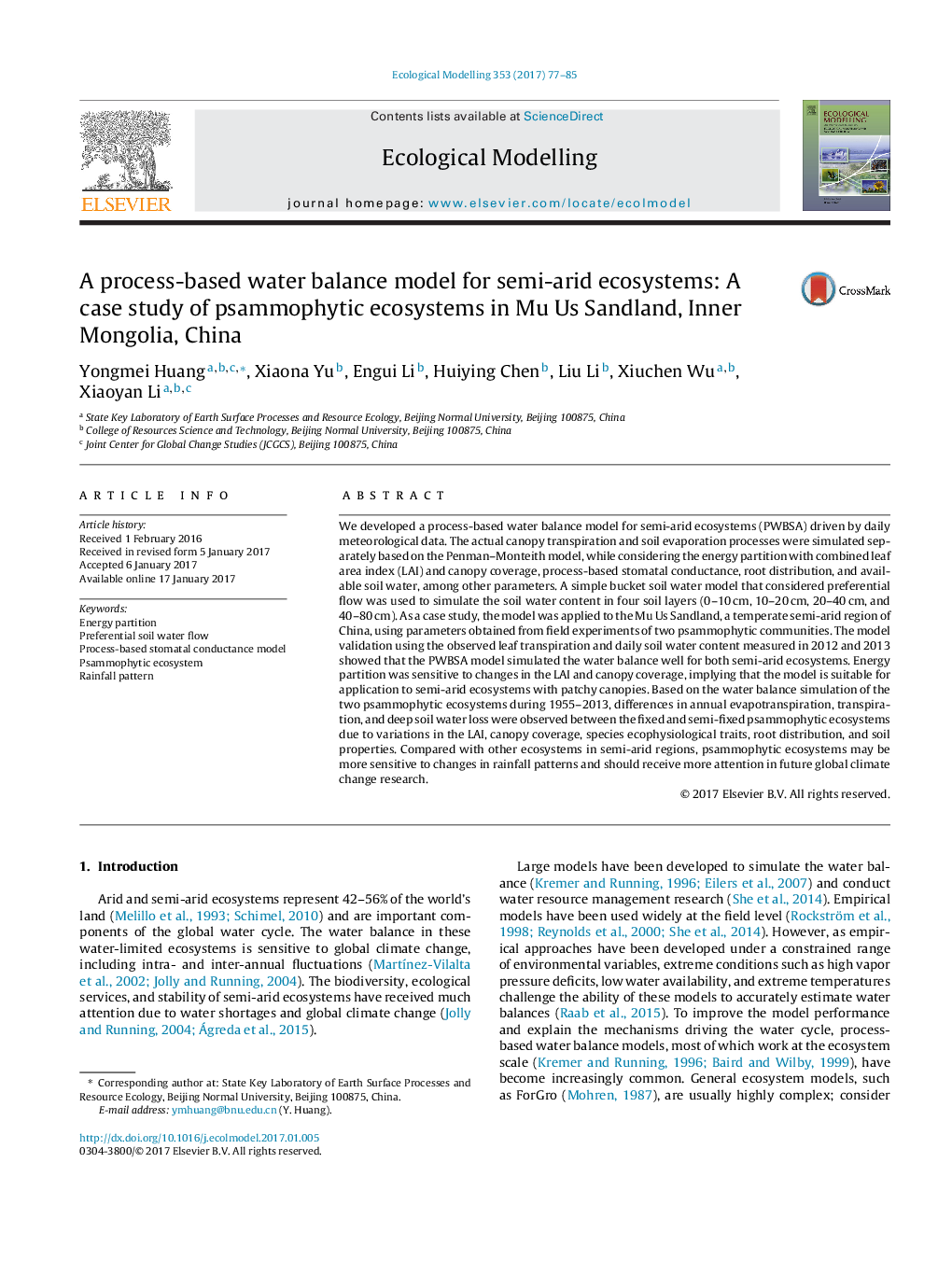| Article ID | Journal | Published Year | Pages | File Type |
|---|---|---|---|---|
| 5742168 | Ecological Modelling | 2017 | 9 Pages |
•A process-based water balance model for semi-arid ecosystems.•Developed an energy partitioning formula by combining LAI and canopy coverage.•Two psammophytic ecosystems in semi-arid region of China were simulated.•Response of actual evapotranspiration to rainfall patterns was analyzed.
We developed a process-based water balance model for semi-arid ecosystems (PWBSA) driven by daily meteorological data. The actual canopy transpiration and soil evaporation processes were simulated separately based on the Penman–Monteith model, while considering the energy partition with combined leaf area index (LAI) and canopy coverage, process-based stomatal conductance, root distribution, and available soil water, among other parameters. A simple bucket soil water model that considered preferential flow was used to simulate the soil water content in four soil layers (0–10 cm, 10–20 cm, 20–40 cm, and 40–80 cm). As a case study, the model was applied to the Mu Us Sandland, a temperate semi-arid region of China, using parameters obtained from field experiments of two psammophytic communities. The model validation using the observed leaf transpiration and daily soil water content measured in 2012 and 2013 showed that the PWBSA model simulated the water balance well for both semi-arid ecosystems. Energy partition was sensitive to changes in the LAI and canopy coverage, implying that the model is suitable for application to semi-arid ecosystems with patchy canopies. Based on the water balance simulation of the two psammophytic ecosystems during 1955–2013, differences in annual evapotranspiration, transpiration, and deep soil water loss were observed between the fixed and semi-fixed psammophytic ecosystems due to variations in the LAI, canopy coverage, species ecophysiological traits, root distribution, and soil properties. Compared with other ecosystems in semi-arid regions, psammophytic ecosystems may be more sensitive to changes in rainfall patterns and should receive more attention in future global climate change research.
